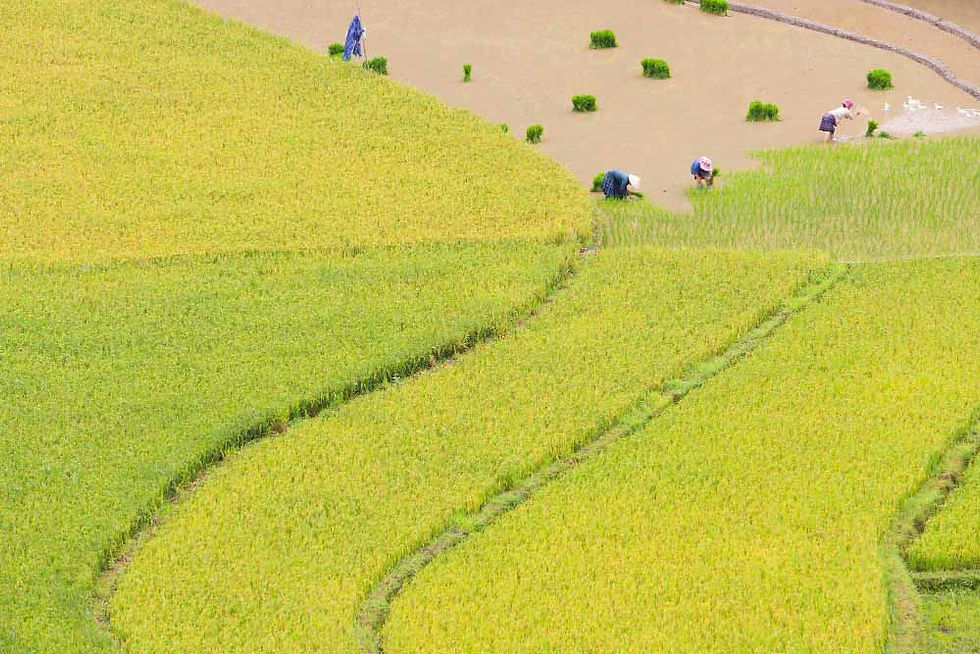Discover the Wisdom and Flavour of Sanchae Bibimbap 🌿
- Withyou
- May 16
- 2 min read
Updated: May 30

Sanchae Bibimbap is more than just a meal—it's a flavorful journey through Korea’s mountain landscapes and a rich cultural heritage passed down through generations. This wholesome and grounding dish reflects the deep connection between Korean cuisine and the natural world. 🌱 A Healthy Bowl of Nature Sanchae Bibimbap is made with freshly steamed rice and topped with a variety of wild mountain greens, then mixed with gochujang (Korean red chili paste). Each ingredient brings a distinct flavour, aroma, and texture, turning every bite into a refreshing experience. These wild vegetables are also packed with health benefits, offering fibre, minerals, vitamins, enzymes, and natural detoxifying compounds. With nearly 70% of Korea covered by mountains, wild greens have long been a staple in traditional Korean cooking—treasured for their nutritional value and seasonal beauty.
“I went into the mountains with a basket in my arms... the mountains are filled with joy. Bracken shaped like fist and fragrant ragwort, royal fern with a good color and delicious clematis...”
🏔️ The Ancient Legacy of Sanchae Bibimbap
Back in the Joseon Dynasty, foraging wild greens was not just a seasonal activity—it was part of a meaningful cultural practice. A common saying went: “If you can sing the names of 99 mountain vegetables, you can endure a three-year drought.” Sanchae Bibimbap evolved from this tradition, blending foraged greens with rice and grains to create a dish that’s as nutritionally balanced as it is flavourful.

🌿 Edible Wild Greens Hundreds of species have been used over time including:
Long-stamen chive
Shepherd’s purse
Wavy bitter cress
Wild parsley
Fatsia sprout
Fischer’s ragwort
Symplocarpus foetidus... and more!
Every bowl changes with the greens used, creating a unique experience each time. 🔍 Searching the Traces of Sanchae Bibimbap Sanchae Bibimbap draws from age-old Korean dishes like Jinchaesik and Oshinban.
Jinchaesik
This version features aged or sun-dried greens like bracken, zucchini, cucumber, eggplant, and radish leaves, which are rehydrated and boiled. According to Dongguk Sesigi (a traditional seasonal food record), eating aged greens in mid-January was thought to bring good health and peace for the year ahead.
Oshinban
A springtime royal dish made with delicate new sprouts like umpa, cardamine komarovii, and parsley shoots—often dressed with honey or chili sauce for the king’s table. The Best Korean Cuisine Perfect for Korean Taste Sanchae Bibimbap is a delicious symbol of Korea’s food philosophy—grounded in balance, wellness, and seasonal harmony. While today’s ingredients may be easier to access, the dish still carries the same cultural depth and natural goodness it always has.
Ready to give it a try? You can recreate this nourishing bowl using fresh or packaged mountain greens available at Korean and Asian grocery stores across Canada.
Shop fresh at Galleria Supermarket and bring the taste of Korean mountains to your kitchen!
Enjoy shopping @Galleria Supermarket!









Comments